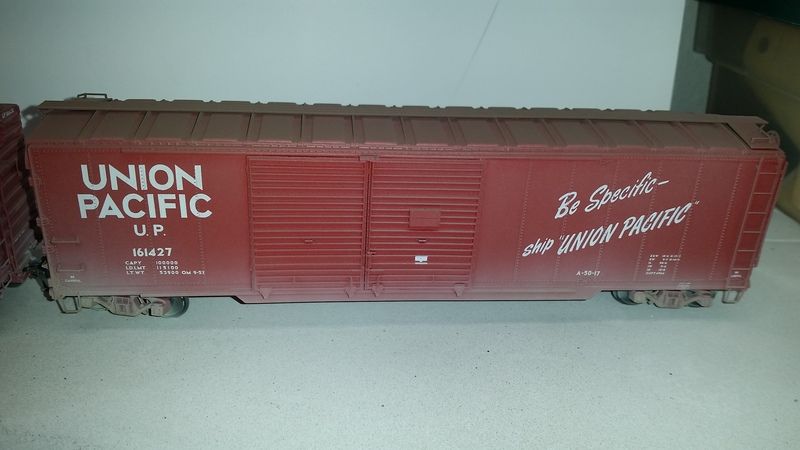For painting wheels, I use a brush - just small enough to fit so that the visible portion of the wheel’s face and rim can be covered without getting too much paint on the sideframe as the wheel on the opposite side is turned. I usually use the same brush to do the back of the wheel and the axle, too, although a wider one would be faster. You can do this while the trucks are still on the car, but in most instances, I do it before installing the trucks.
In most cases, I don’t paint the sideframes, although for those roads that did, a brush works well enough. Most paint doesn’t stick well to Delrin sideframes, but trucks don’t get handled too much, so it shouldn’t be a problem.
I have, on occasion, used a sandblaster to put a little “tooth” on the sideframes, using baking soda as a medium. For this, I remove the wheelsets. I generally stick with the wheels which came with the trucks, and do prefer plastic ones, mostly because the overly-wide wheel treads are less noticeable in black (they’re also quieter).
For paint colour on wheels, use a rust-like colour for cars with roller bearings - front and rear faces and the axles. The same shades are suitable for cars with solid bearings, but only on the backs of the wheels and the axles. For wheel faces, black, brownish-black, greenish-black, etc., etc. are all suitable - the wheel faces get covered in oil from the journal boxes, then any dirt and dust kicked-up as the car moves generally sticks to that.
When I weather the car, I may use any combination of brushwork, pastels, or airbrushing, but the final step is almost always, for any method, airbrushing. For this, the paint is thinned using about 90% thinner. The car itself is weathered as desired, then I put the car on a piece of track in the spray booth, moving it back and forth with my free hand while spraying the wheels, trucks, and underbody. Keeping it moving prevents having only portions of th

